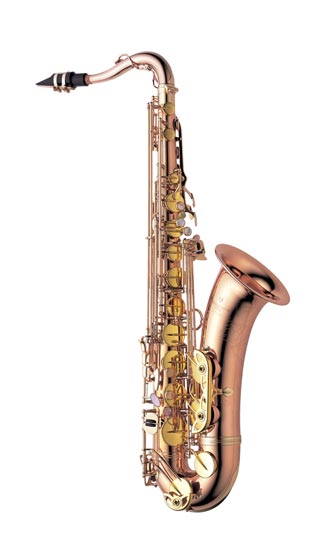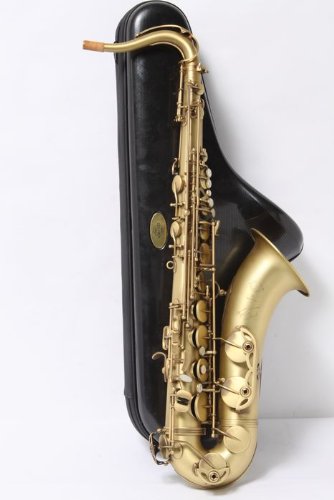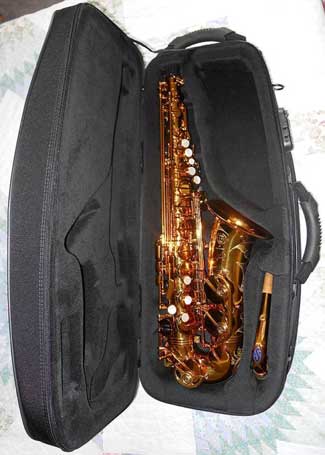Are these Horns by Selmer and Yanagisawa All that They’re Cracked Up to Be?

Introduction
For years and years now, Conn-Selmer has been manufacturing some of the most popular and highly regarded woodwind and brass instruments on the market. I was recently contacted by Derek Bowen over at Conn-Selmer, and he was nice enough to send me a Yanagisawa 992 tenor, Selmer Reference 54 tenor, and a Selmer Reference 54 alto saxophone. I will be reviewing these three saxophones based on the following performance criteria:
- Appearance
- Tone & Responsiveness
- Action
- Intonation
- Overall Thoughts.
Yanagisawa 992 Tenor

Appearance
The Yanagisawa 992 saxophone looks great with its bronze body and gold lacquer keys. I personally own a Yanagisawa 991 tenor which I absolutely think is a great modern tenor. The 992 has some nice features such as metal resonators, which I would definitely consider in my next horn purchase.
Tone & Response
Overall, my Yanagisawa 991 tends to be on the brighter side througout the horn but while trying out the 992, the bronze finish gave this horn a darker sound and with the metal resonators (on the 992 not on the 991) this tenor had a bigger, punchier sound. I felt that the metal resonators really enhanced the core sound of the 992 and did not take away from the dark lush tone. The 992’s response was instant. I played this horn right out of the box, and had no difficulty playing from low Bb to High F#. I found while moving into the altissimo register it was almost too easy and this was something that I have to practice more on my Mark VI tenor.
Action
I would say the Yanagisawa embodies the free-blowing-ness of a Yamaha, but with the action more in-line with a modern Selmer. The Yanagisawa 992 was well-constructed and was very easy to get around, especially in the palm keys. I believe the attention to detail with regards to fine-tuning is the reason these horns play so well out of the case and require essentially no adjustments.
Intonation
The intonation on the 992 was spot on. I went through my overtone workout smoothly and could not find any notes in particular that were excessively sharp. I do have to say that on my 991, I found that, since it’s a brighter horn, I had to adjust to the brighter sound when fine tuning in the upper register. The 992 I believe has a warmer tone due to the bronze finish and I found a bit easier to play in tune than my 991.
Overall
Compared to my 991, the Yanagisawa 992 tenor saxophone would work well for classical as well as jazz musicians due to its warm tone. I found the 992 to be a very versatile horn and with the right mouthpiece and continual practice (as always), this horn will last you years and years with few trips to the repair shop.
Selmer Reference 54 Tenor (matte finish)

Appearance
The Selmer Reference 54 Matte finish was the first modern Selmer model I ever saw offered with a matte finish and no engraving. This “vintage” finish gives the Reference 54 a different look in comparison too many of the “un-lacquered” or “raw” finish saxophones seen on the market today. The matte finish model unlike the standard lacquer 54 had a light grey hue in certain areas.
Tone & Response
I found the overall tone of the reference to be a bit brighter compared to my Mark VI throughout the horn. The response was quick and had a nice edge and resonance to the sound. I did not find this horn to be stuffy at all and found it to have the right amount of resistance so it was not super free blowing but at the same time, it gave me something I could push against which made playing dynamics very easy. I did find my Mark VI to have a more complex tone, but believe the Reference 54 is the closest that Selmer has come to re-creating the “Mark VI sound” that so many players are after.
Action
The Reference 54 tenor’s action was very similar to my Selmer Mark VI layout but there were some differences. I found the low C and Eb key to be larger which can be seen on many modern horns for extra grip for your pinky. I found the G#, C#, B, and Bb side keys to be a bit larger and this feature reminded me of the Mark VII. The 3rd difference I noticed was the neck because it was a bit higher and sloped down which affects how the air passes thru the neck. I have noticed this with the Selmer super action 80 series II tenor with the higher profile neck and believe there are some added benefits in terms of how fast the air moves thru the neck. I personally thought the higher profile neck might feel a bit unusual at first but something you would become accustomed to very quickly.
Intonation
I found the intonation to play great on the Reference 54 tenor like the Yanagisawa 992. I did find the altissimo range to not be as instant as the Yanagisawa, but the overall intonation was easier to achieve on the Reference than my Mark VI.
Overall
The Selmer reference 54 tenor should not to be viewed as an identical copy of the Mark VI, but embodies many of the characteristics of the Mark VI with the modern keywork and intonation improvements seen on the modern Selmers. I would have to say that I prefer the key placement of my Mark VI over the Reference as well as the Mark VI neck compared to the Reference 54. What I did enjoy about this model is the improved build quality as well as the overall intonation, which was easier to achieve on the Reference 54.
Selmer Reference 54 alto

Appearance
The Reference 54 alto is one of the most attractive looking altos on the market today. The Reference 54’s honey gold lacquer finish with its deep engraving reminds me of some of the mint-condition Selmers from the 60’s.
Tone & Response
The overall tone of the Reference 54 alto was darker than my Selmer Super Balanced Action alto, but had a nice edge to the sound that gave it a full and focused, bright core sound. I found the Reference 54 to have a instantaneous response, and like the reference tenor, the Reference 54 had some resistance which helped me develop a nice round tone, especially in the upper register.
Action
I found the Reference 54 alto to embody more of the Selmer Mark VI look and feel compared to the Reference 54 tenor saxophone. The key layout felt so similar to many of the early 60’s and 70’s Mark VIs I have tried out. The one key placement which for me personally I would have changed is the bis key which was further out to the right of the B pearl. I understand this is great for players who feel the bis key could feel uncomfortable when its directly in line with the B, A, and G pearls, but since the Selmer Super Balanced Action (SBA) and Yamaha custom altos I play on have it in-line with the rest of the pearls, this change in the bis key placement would be something I would have to adjust to.
Intonation
I found the intonation on the Reference 54 alto to play great, especially in the upper register and in the palm keys where I have a tendency to be a bit sharp. I found the Reference 54 alto to have better intonation overall compared to my SBA and found this horn to simply require less adjustment to play certain overtones in tune.
Overall
The Selmer Reference 54 alto saxophone was a great effort by Selmer to embody the overall characteristics of the Selmer Mark VI while incorporating the modern innovations that would enhance and improve upon the Mark VI’s overall responsiveness, intonation, and build quality.
Closing Thoughts
The Yanagisawa 992, the Selmer Reference 54 (matte finish), and the Selmer Reference 54 alto are my favorite models that Conn-Selmer has to offer. I would have to say the 992 would work well for classical as well as jazz players, and I believe the 992 will attract more and more players who get a chance to test it out.
The Reference 54 tenor is a great tenor, but I recommend testing out a few Reference 54 tenors back-to-back when going to your local music store. The reason is, I found that the Reference 54 tenors are not as consistent from horn to horn as the Yanagisawa line and are truly a very personal horn. Once you find the right one, it will be hard to put down.
The Reference 54 alto truly captures the look, feel, and vibe of the great Mark VI’s. Some of the keywork I would like to change (such as the bis key and the spring heights), but, like the Reference 54 tenor, the Reference alto is a horn that I have been told by many professionals to try a couple of them out, and that once you find the right one, you won’t play on anything else.
I would like to thank, once again, Derek Bowen over at Conn-Selmer for sending me these great horns, and hope to, in the future, to write a review on the various sopranos and altos that Yanagisawa and Selmer have to offer.
Audio Samples
To illustrate the difference in sound quality between these three horns, I’ve recorded some audio samples of myself on each one.
Yanagisawa 992 Tenor
[audio: STE-013.mp3]Selmer Reference 54 Tenor (matte finish)
[audio: STE-015.mp3]Selmer Reference 54 alto
[audio: STE-016.mp3]Please post your comments on what you think, and also let me know if you have any questions about these models or any other models that Conn-Selmer offers.
Yanagisawa main website:
http://www.yanagisawasaxophones.com
Henri Selmer Paris main website:
http://www.selmer.fr/index.php






April 26, 2013 @ 12:57 pm
Thank you for this review.
I am floored by the immense dark sound the Yani is giving you.
April 26, 2013 @ 3:13 pm
This is very helpful; thanks for these efforts. For a clearer comparison of the instruments, though, hearing the same music played might be useful. Like maybe a slow passage or melody and then a fast one, but the same passages for all the instruments. Just a thought for future comparisons.
April 26, 2013 @ 4:55 pm
Hey Paul,
Great Advice. I am going to try and make some videos of me test playing saxophones, mouthpieces, and ligatures and include a piece of music or etude while demoing each piece of equipment.
Zach
April 28, 2013 @ 10:42 am
Sounds good, Zach. With regard to this idea of demonstrating a piece of equipment using the same music, here’s a video you might enjoy, if you haven’t seen it before; James Galway demonstrating a bunch of flutes.
http://www.youtube.com/watch?v=G0n3n3N3SOY
–Paul
May 2, 2013 @ 2:23 pm
The bronze Yani is a solid phosphor bronze body, isn’t it? The second paragraph refers to a bronze finish. Great sound from that thing.
Have you considered comparing bronze vs. brass versions of the same model Yani? That could be quite interesting.
May 7, 2013 @ 3:38 pm
I have considered this. I own a yanagisawa 991 tenor and it was fun to compare it to the 992. I actually prefer the 992 over my 991 but would most likely buy the bronze neck and get some work down on my upper stack before considering selling it and purchasing a new horn.
Zach
May 2, 2013 @ 3:05 pm
hello, please tell me about the walstein Bauhaus tenor saxophone made in china.i hear they are some real good horns.i,am thinking about buying one.they are some nice blowing horns.made of bronze body.bronze saxophone sound better then brass.i been playing pro. for 49 years.and this horn sound almost like the yangisawa 992 tenor.and the price is great too.please try one for me.in the u.s.a.contact russ becker at russ becker.com.this guy is great to talk with to.oh yes with the oct.key was design let the yangisawa tenor.from.jas.huggins
May 3, 2013 @ 11:20 am
Spam Flag
November 30, 2013 @ 12:41 am
I am amazed by how dumpy the Selmer sounds, and how much the Yani sounds like a vintage Selmer combined with the velvet of a Keilwerth. The Selmers are so rough these days.
November 30, 2013 @ 8:19 am
Hey George,
I really like the Yanagisawa’s and vintage Selmer’s. I still believe that Selmer make’s a great modern horn but not as good as some of the vintage mark VI’s. Of all the Selmer models (series II, series III, and reference 54), I would have to say the Reference 54 is the best modern model from Selmer (at least that is what I think). I would have to say that with the modern Selmer’s, you have to find a good one. I believe they are consistent from horn to horn but not as consistent as a Yanagisawa or Yamaha. On the other-hand, when you find a really good Mark VI or reference 54, it is hard to put down.
What is your main setup George?
Zach
September 16, 2015 @ 9:06 am
Zach: I thought the Yani had a darker sound than the Ref 54. But both played well. I guess it depends on how it feels and sounds to you, the player.
I thought the Ref 54 alto had a nice sound too.
Have you ever played and /or posted anything about the Cannonball Big Bell Raven Saxophones. A lot of people including me like these horns better than the new Selmers, Keilwerths, Yamahas etc. For 1 thing they are a lot less money. Secondly they play extremely well with really good intonation. To me my Cannonball tenor is almost like a Conn 10M in sound and response. There is less resistance on the lowest notes because the Big Bell creates less turbulence according to Cannonball. Also there necks which are a special design really help out in the sound and resisitance area. A lot of players are using these horns now instead of their Selmer Mk Vi’s and they sound great on the Cannonballs. They are also more sturdy than any horn I’ve seen. The low Bb, B and C are double braced which helps in keeping the horn in regulation.
If you go to their website here is what they say. Yes the horns are made in Tawain by a really good shop. The key is that they are then sent to Cannonball’s shop in Salt Lake City where they horn are adjusted and made to Cannonballs specifications. hey have 1 guy who does sopranos and altos, another guy just works on the tenors and yet another guy just works on the baris. Also the necks are shaped and made to Cannonballs specs. So basically they get a good horn from Taiwan and then change it and shape it into a great horn. You ought to contact the owner Tevis and check these horns out.
September 18, 2015 @ 9:19 am
Hello Larry,
I have played the Cannonball line of saxophones at various music stores and trade shows but have never sat down with one over a couple weeks. My favorite model is the Key Artist Series. I have seen new saxophones coming out every year and have to say that the manufacturing and quality control in Taiwan has gotten better and better. Having the saxophone setup after it arrives to the U.S. from Taiwan by a trained technician makes a big difference in play-ability. I am seeing more and more music stores offering their own line of saxophones and their setup is what differentiates there line from the other Taiwanese manufactured saxophones. The Cannonball saxophones are priced very competitively and can be found at many are almost all Sam Ash music stores. Some other brands I would consider as well would be Viking, MacSax, P Mauriat, R.S. Berkeley, Lupifaro, and Ishimori. If you have not had a chance and get to, Ishimori makes one of the best “vintage” saxophones I have test played in a long time and hope to stop by their booth at NAMM if they attend this year.
Zach
954-292-2951
Thanks for the Feedback,
Zach